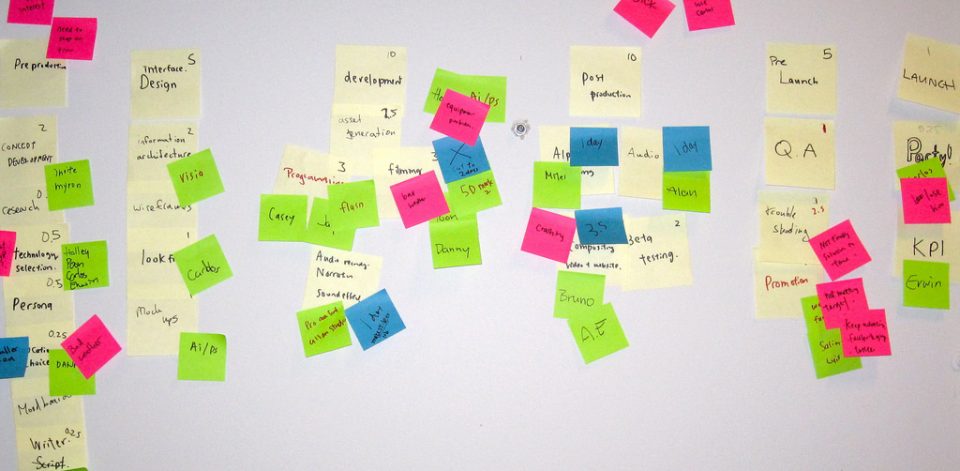
By DSG Group on October 5, 2017
Are you looking for ways to improve the results of your small-group collaborations? Here are six different technologies that can facilitate small-group work — not because they are computer-based, but because they support core project-management “best practices” .
- Collaborative writing tools. Gone are the days of having to email a Word document back and forth, and hoping that you were editing the latest version. Collaborative writing tools like Google Docs (available to UCLA users through g.ucla.edu) or Box Notes (available to UCLA users through the UCLA Box service) can help a small group efficiently draft work breakdowns, to-do lists, website content, grant proposals, or any other document, either simultaneously or asynchronously. Another advantage to collaborative writing tools is “versioning”, which means you can track back to any previous version of a document and see who last edited it, without having to save or manage multiple copies. And you can’t lose them!
- Online file sharing. No more searching through your email for that document your partner sent you two months ago! UCLA has licensed both Box and Google Drive (part of the g.ucla.edu suite) for dedicated file sharing, and Office365/EM email users have access to Microsoft’s Onedrive. Under the UCLA agreements, each of these services provides small groups a free archive for important project materials. Storing files online means critical documents are always at your fingertips. Your files are protected even if someone on the team loses their computer, and most offer version control to help you keep the space organized.
- Video conferencing. A frequent team meeting provides early warning if some part of the project is proving harder than anticipated or running behind schedule. Easy-to-use video-conferencing solutions like Zoom and Skype can facilitate that meeting, even if you can’t get everyone together in one place. For academic departments participating in the UCLA Common Collaboration and Learning Environment (CCLE), Zoom at UCLA gives instructors the added functionality of a Zoom Pro account, and instructors can easily start a Zoom meeting for your class right from within your CCLE course site. For more information: https://softwarecentral.ucla.edu/products-zoom
- Meeting scheduling. Tired of emailing proposed dates and times back and forth? Try Doodle or Whenisgood. Each team member spends just a few minutes marking his or her availability on a form, and the application will find the time(s) that work best for all involved.
- Tracking progress and milestones. ProjectSheet Planning, a plugin for Google Sheets, will turn your spreadsheet of to-dos into a Gantt chart, giving your team a much more granular view of your progress and risk areas. Use this free plugin to create a simple project work breakdown structure, itemizing tasks and subtasks, and assigning due dates for each. Easily integrates with g.ucla.edu!
- All in one. If you want one tool that can do everything, but isn’t hard to use, take a close look at Basecamp. Its “discussions” feature will capture all of your project-related emails for easy reference and archiving. Its “to-do lists” feature facilitates easy deadline-setting and assignment of tasks to team members. And it has built-in shared document-authoring and file sharing, too. Best of all, it’s free for teachers and students (and very cheap for others).
At HumTech we regularly use all of these tools, and are happy to help you get started with any of them. Submit a ticket to HumTech requesting help with the tool that interests you, along with your availability and the best way to reach you. One of our team will contact you to set an appointment. In the meantime, give these a try! You can’t break them, and you may find them so easy to use that you’ll want to start using them with your groups right away.
Photo courtesy of Vancouver Film School on Flickr. Licensed under terms of Creative Commons CC BY 2.0.
